Water and Sacred Land
I have been contemplating, what makes me into the one I am? What prompt me into doing the things that I do, as an activist?
I first started in social movement, environmental justice and direct action in 2009 during Choi Yuen Village preservation movement or better known as the anti-express railway movement. Yet it must stretch beyond that, somewhere much earlier. When I dive deep into the ocean of memories, I see the vision of a swamp. It must be water.

I grew up in a wetland called Fung Lok Wai. It is situated at the North-West of Hong Kong, at the bottom of A Kai Shan. The wetland used to be fish ponds and surrounded by mangrove. The most famous produce being U-tau(Flathead grey mullet) , that lives in river deltas between fresh and sea water. They taste best when barbequed or steamed. My childhood friends used to spice them and wrap them in tin wrap and threw into fire.
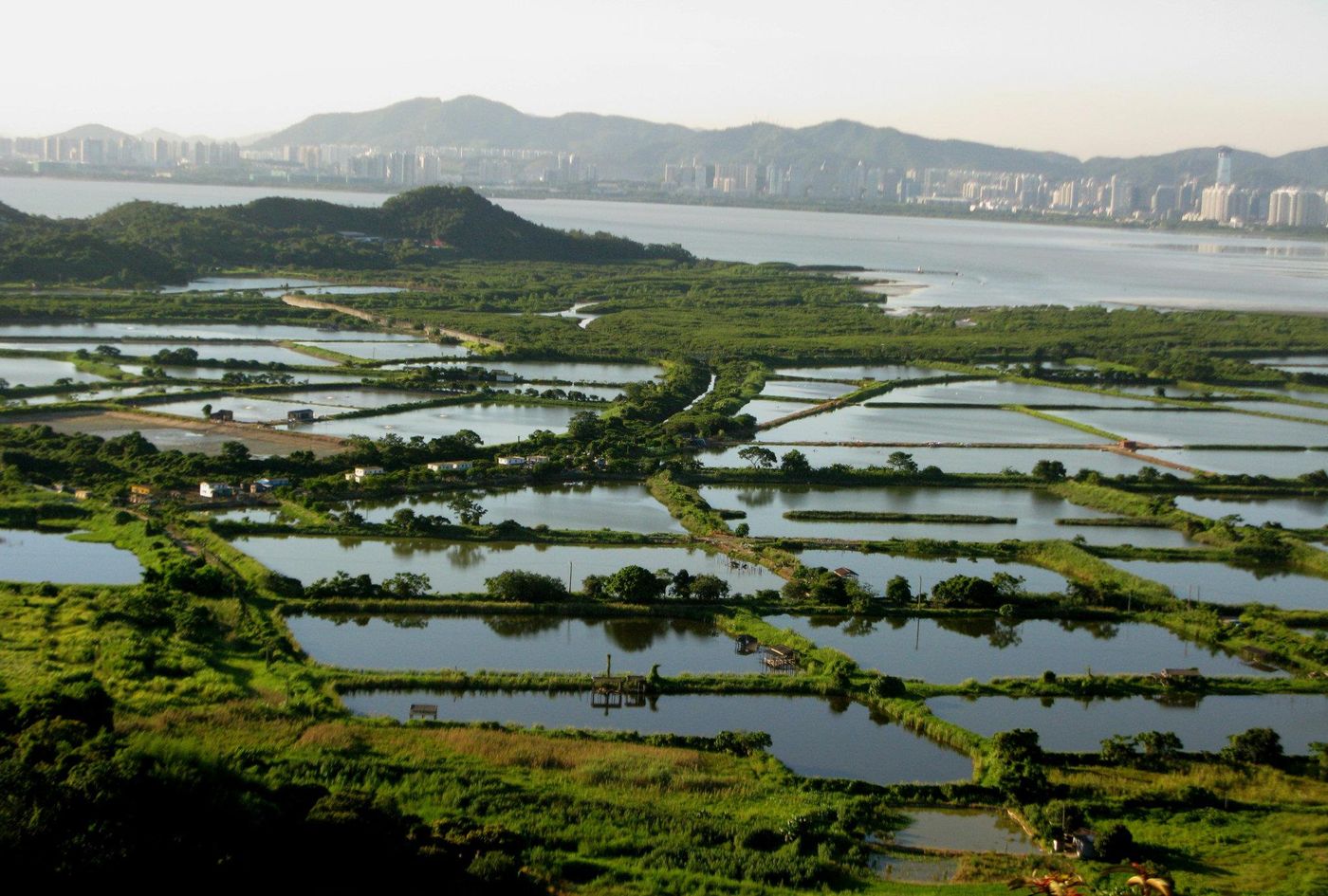
Growing up in a rural area of Hong Kong gave me a totally different experience as someone representing the Global Financial Center or Asia’s World City. I remember everyday after school I will rush into the mountains to discover new insects I can find in the bushes, mushrooms after rain or fish in the stream. Wild dogs come to greet me as I gazed at the sunset in autumn breeze. They are spirited. I talked to trees as I walked through the forest.
I like to catch crickets in the hillside graveyard and was never afraid to be alone in the mountains after dark. Fireflies will sprinkle the sky with wonders. I remember there were sometimes dead fireflies at my doorstep. They are quite ugly in daylight. Brown, with big black eyes.
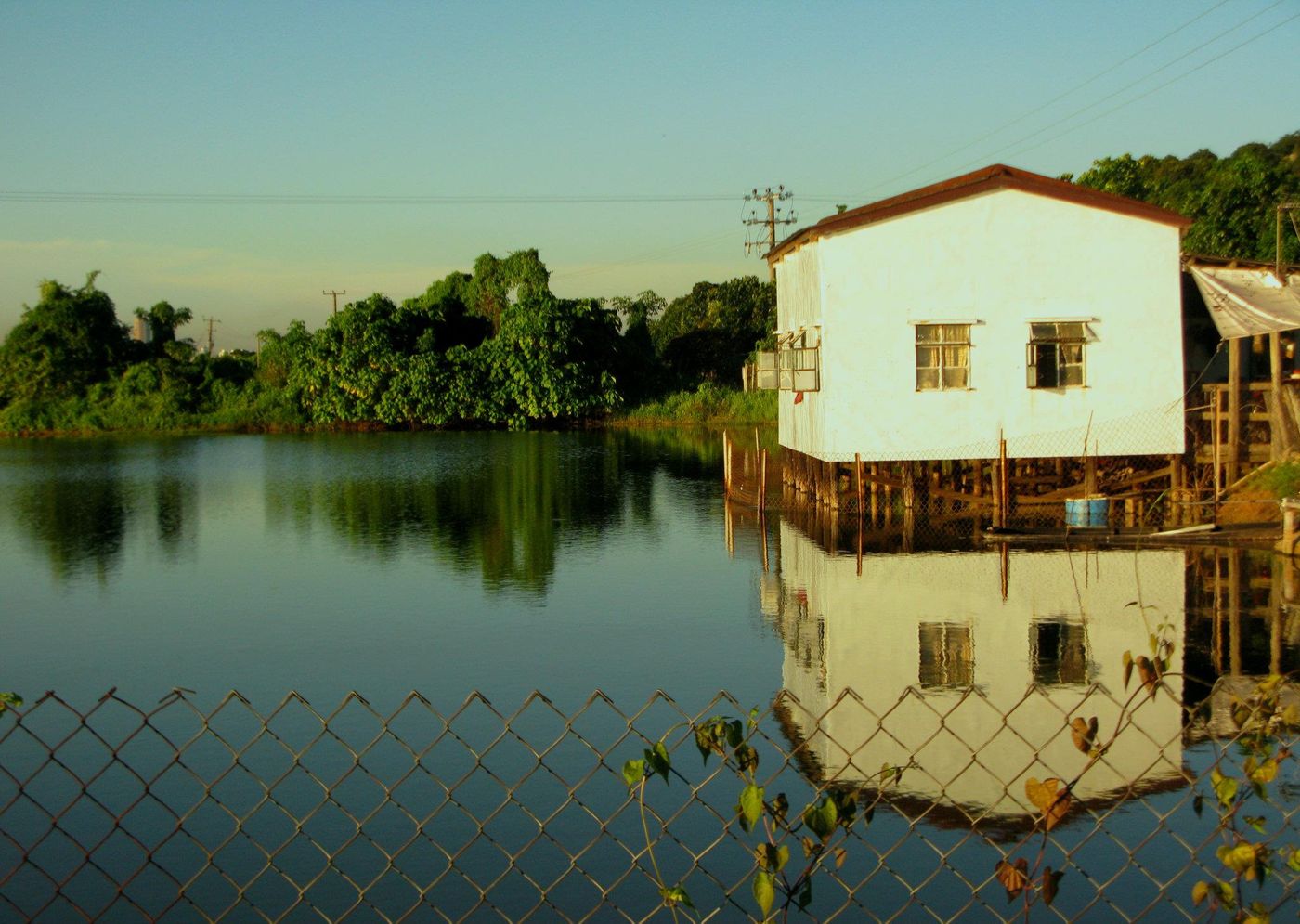
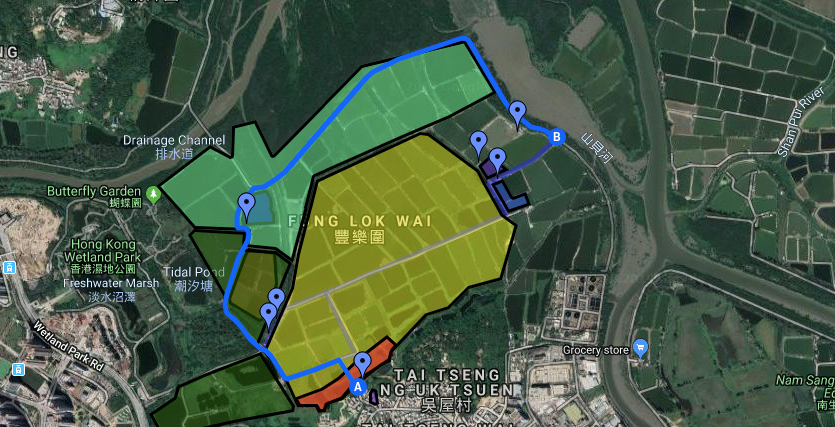
In the early 90’s, the property developer that belongs to billionaire Li-Ka Shing had a lawsuit with the fishermen there. The fishermen lost and were evacuated. I vaguely remember the protest banners hung over the area. I was too small to understand.
In my college years Li-Ka Shing filed an application to Town Planning Board proposing to develop the wetland into 9 blocks of 23 storey-high luxurious buildings. In order to convince the Town Planning Board he not only invited an Australian bird expert to testify that high rise development would not affect seasonal bird migrations, but also have WWF to back up the project with an annual donation of 4 million HKD.
This scandal went viral when the green groups went protest and WWF dropped out from the collaboration.During that time, a rare species of firefly named Pteroptyx maipo was discovered in the fishponds. Yes, the ugly brown ones that I saw all the time in my childhood. They made headlines and stopped the development for a while but the town planning board didn’t think they were so special and decided to allow the development anyway. I was among the community members of the action and that was really the first time I feel that all these treasures, all this ecology that enriched my childhood were nothing but merely potential money in the eyes of property developers.

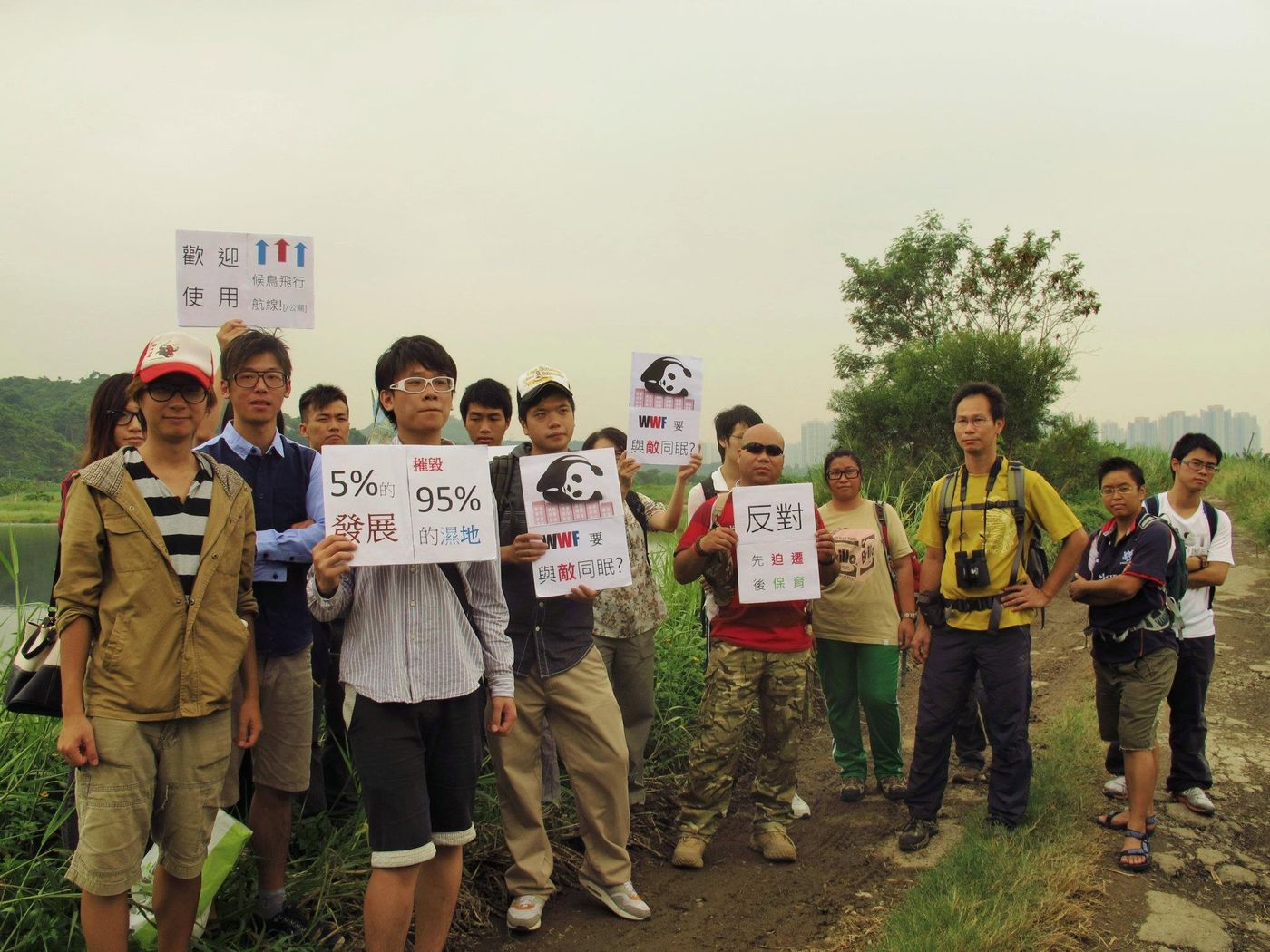
The term Property Development Hegemony is coined by Alice Poon Wai-Han in her book Land and the Ruling Class in Hong Kong (1). By “hegemony” it means a coercive power from the property developer to almost all the sectors in Hong Kong.
According to Libre Research Community’s research (2), over 74% of North West Hong Kong’s ecologically sensitive wetlands are in the hands of private property developers. And they are all facing similar threats. Take Nam Sang Wai for example, it is a popular nesting site for migrating birds and one of the most beloved natural getaways for Hong Kong people. Henderson Land Development has been trying to develop the whole area into gated community and shopping malls. Throughout the years there have been numerous mysterious fire to the forest in rainy seasons. There are suspecting that arson were coordinated to lower the ecological values of the wetland.
1.Alice Poon Wai-Han, Land and the Ruling Class in Hong Kong, 2005 by Richmond 2.“Study on the Ownership of Fish Ponds in North West New Territories”, 2018 by Liber Research Community ( https://qrgo.page.link/bqxQ9 )

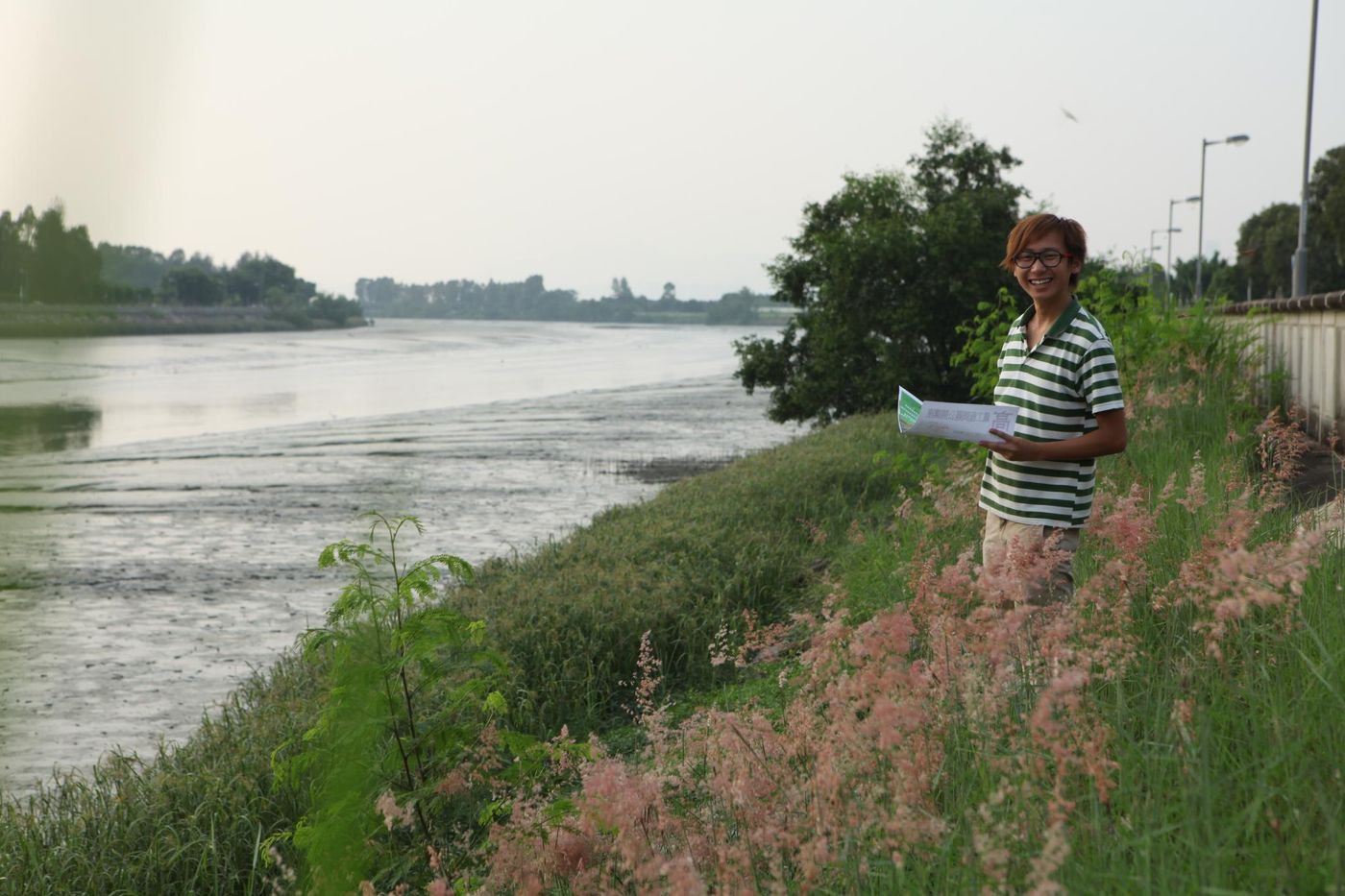
When I was working for Land Justice League in 2011, I engaged with a village that fell victim to the Express Railway construction. The village is called Ngau Tam Mei, home to over 3000 villagers. Many of them relied on underground water for agriculture and aquaculture. They keep beautiful champion coy fish that are up to 1 meter long. Some keep rare orchid thanks to the rich water source. The construction of the Express Railway Tunnel excavations caused the loss of underground water and many wells of the villagers dried out.

Villagers protested and demanded reconstruction of water wells but Mass Transit Railway company (MTR) shredded away all responsibilities. Villagers found out that there was a secret deal between the then village head and the MTR company. The village head lied about the potential effects of the construction and hidden crucial information from the affected villagers. Eventually a new village concern group was formed and the village head was voted down two years after the scandal. During the time, I organised guided tours to the village and carried out an immersive investigation into the water resources of the area and the problem of over-reliance on imported water. However, it put little pressure on MTR and the damage to the environment is permanent. One of the farmers Mr Dee had to quit farming and become a van driver instead. I still keep the baby dragon fruit that he gave me.
That is not the end of the story. With the MTR’s new railway project in sight, the whole village is likely to be up-rooted and evicted altogether in the coming future. It was a milestone in my life where I learned to accept failure in movements and realise that environmental justice is inseparable from existing political structure and property development hegemony.
3.“Tung Kong Water? Local Water? Conserving precious water resources”, 2017 SCMHK ( https://youtu.be/qBGcGVcGi_c )



Very MK
In 2014 Michael Leung and I started the Very MK project. It was situated on the rooftop of my building that was about to be demolished by Urban Renewal Authority, a major gentrifier in Hong Kong. We asked farmers who were being evicted to donate their soil to us. For a farmer, soil is a precious gift. It takes roughly 2 years to prepare the right soil before any serious cultivation can start.
We grow various produce with these soil. The plants tell stories. The wild passion fruit climbs to the iron illegal structure that marks the refugee influx in 1970s. The okra goes to a restaurant owner that has diabetes. The Chinese yam was a gift from hawker Kai Jie. The passion fruit belonged to a theater star Pumpkin Jojo. The bees from another rooftop constantly come visit. I kept a tank of fish as mosquito control. The chosen species, Macropodus hongkongensis, can survive with little oxygen and prey on larvae.
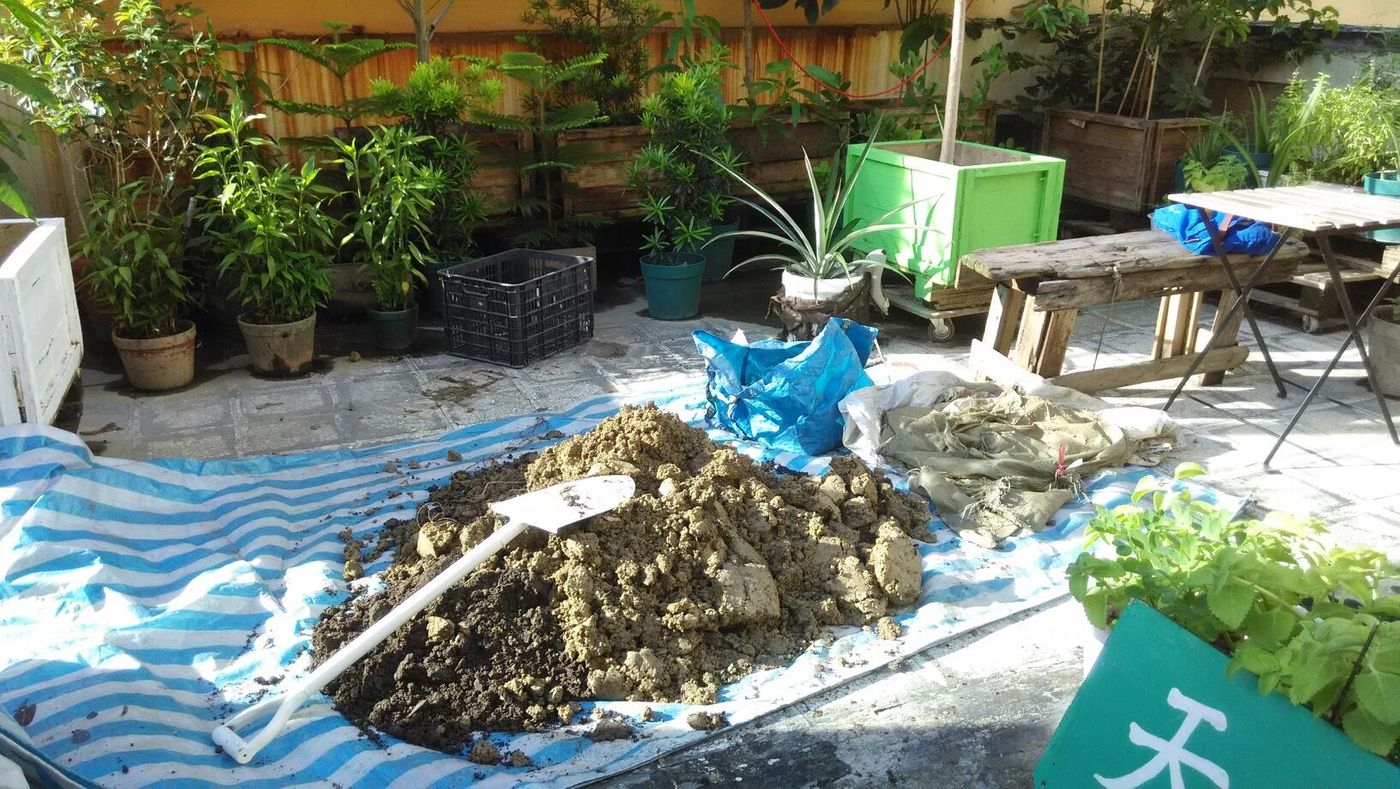

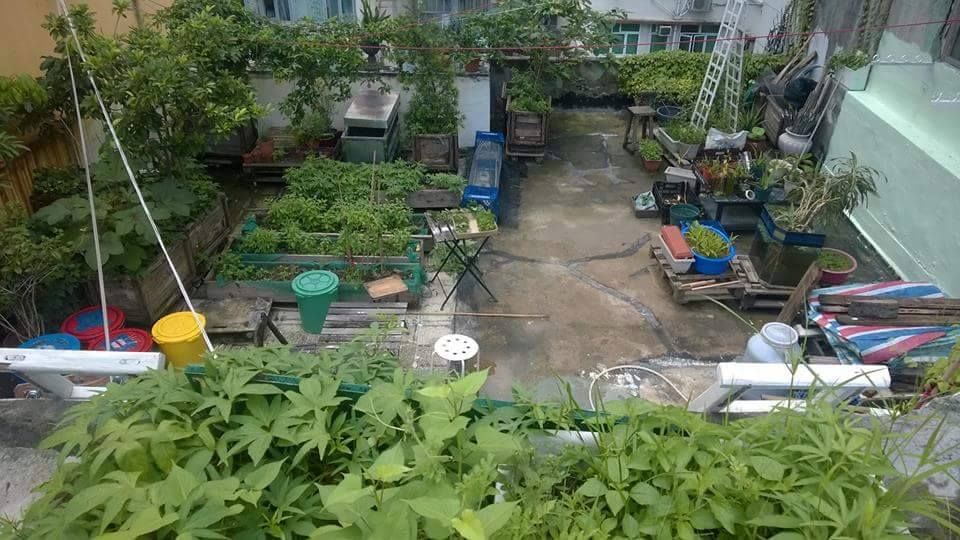

The idea of Very MK was to illustrate how property developers literally make money out of thin air by exploiting the plot-ratio and in the meanwhile destroying all the alternatives that could have been (4).
As soon as visitors walked to Very MK, they realised it was a 3D installation that grows. They got into a heterotopia and come into contact with the soil from far away farmlands. The farm was eventually torn down by the Authority and the “quality of life” advertised on the billboard obviously did not include me or any of my neighbours. We are like dandelions blown by the wind. Yet, according to Urbanist Huang Shu-Mei (5) who studied care space, many of the occupants evicted by urban renewal will inevitably return to the same block as cleaners or security guards. They are deskilled and de-socialised in the process while couldn’t resist the gravity of their impoverishment.
4.“Discussion on the Issues of Urban Renewal in Hong Kong”, 2015 by Kim-Ching Chan (https://bit.ly/33iSZjb) 5. Huang Shu-Mei, Urbanizing Carescapes of Hong Kong: Two Systems, One City, 2015 by Lexington Books

Till today I’m still in debt to the experience of resistance, both as a companion to endangered communities and a victim myself. I am deeply grateful to receive gifts from the earth. The soil, the river, the dirt and all the living things among them. I was privileged to grow up with nature and be able to resonate with it. There is a sacred spot in my heart that is always pure and full of spirits. I drew energy from the swamp of my childhood when I was disheartened by the grim reality. In the midst of my daily resistance I find myself planting bush passion fruit(Passiflora foetida) seedlings to gain a peace of mind. I would like to imagine we the people as resilience as these perennial climbers that could tolerate arid ground.


